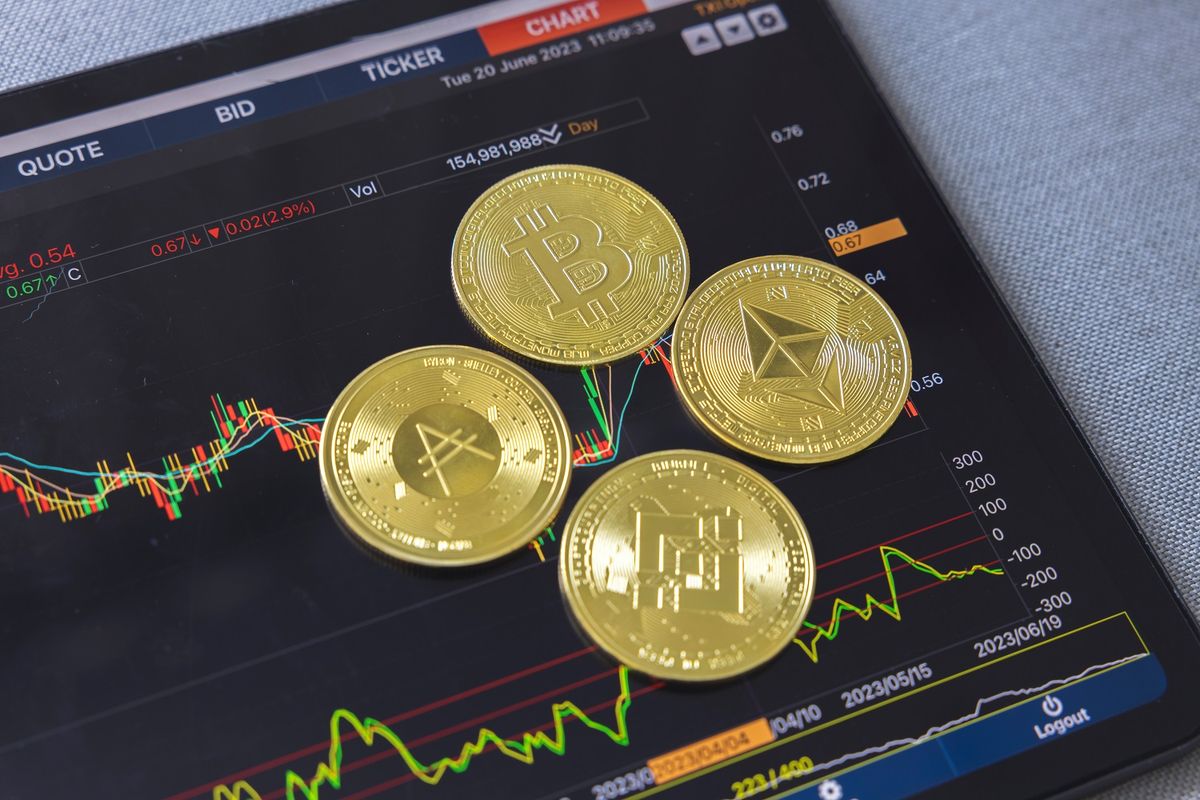A recent report by Technavio states that the global cryptocurrency market is expected to grow by $1.81 billion by 2027, equivalent to a CAGR of 15.81%, from 2022 to 2027. This may seem impressive at first, but it’s still far off from November 2021 levels, when the global cryptocurrency market passed capitalization of $3 trillion. It dropped thereafter but recovered and rose again, this time to $2.8 trillion.
North America is the main player in the global cryptocurrency market
North America’s estimated contribution to global cryptocurrency market growth during the forecast period is significant, estimated at 48%. Technavio analysts provided detailed insight into the drivers and trends forming the market.
With a myriad of innovations and market players, North America dominates the global cryptocurrency market. This trend goes back to 2022 when there was a surge in demand for digital payments. Thanks to its innovations in digital currency, the US is a key player in this niche. As platforms increase investments to augment their presence on this continent, further regional expansion is anticipated.
Bitcoin has the largest global cryptocurrency market cap
During the forecast period, the growth of Bitcoin’s market share will contribute greatly to overall global cryptocurrency market growth. 95% of crypto holders are familiar with Bitcoin, the world’s flagship crypto. Its market cap is more than twice that of Ethereum, the second-biggest crypto. There are four stablecoins in the top 20 biggest cryptocurrencies by market cap: Tether, USD Coin, Binance USD, and DAI. Their value is pegged directly to the USD.
The share of people in the US who trade cryptocurrencies is 8%. Given how popular Bitcoin is, the global cryptocurrency market is projected to see major growth during the forecast period.
Investments in digital assets are increasing
Global cryptocurrency market size is increasing relative to the financial asset market in general. Digital assets allow swift transfer of ownership without the need for paper documents. Many users interact with crypto daily, from directly investing in it to digitizing existing financial assets. Thus, crypto has become part of the existing network of traditional financial markets. This factor is driving global cryptocurrency market growth.
Digital currencies enable more affordable and faster bank transfers, speeding up international money transfers and e-commerce and allowing for a higher number of financial transactions in developing countries.
What’s behind global cryptocurrency market volatility?
Cryptocurrency price volatility is one of the major limiting factors in terms of global cryptocurrency market growth. Risk-averse investors refrain from including cryptocurrencies in their investment portfolios. The price volatility is substantial because whale and shark investors, who hold the majority of cryptocurrencies, trade and exchange them in bulk on crypto exchanges and other trading platforms, some of which are unregulated.
Innovation and transparency converge in today’s digital landscape via distributed ledger technology, giving venture capital investors new and unique opportunities. The global cryptocurrency market and cryptocurrency industry, spanning both developed and emerging economies, continue to redefine financial landscapes with NFT markets and DeFi platforms.
The Bitcoin market remains a beacon of investment opportunity, including for Bitcoin miners, who are equipped with CPUs, GPUs, FPGAs, and ASICs. The need for reliable monitoring comes with great investment potential, ensuring hash code integrity within the peer-to-peer system.
Regulatory uncertainty casts a shadow, but interest remains at record levels
Regulatory uncertainty casts a shadow over the global cryptocurrency market, leaving crypto traders and investors in emerging and even developed markets struggling with ambiguous regulatory status. Control, privacy, and security have become of paramount importance for small and large companies navigating the global cryptocurrency market.
Regulations in the US have come very far, with the SEC approving 11 spot Bitcoin ETFs on January 11 this year. Retail giants like Bloomingdale’s and tech giants like Apple are making moves to enter the global cryptocurrency market, while PayPal, banks, and other traditional financial institutions are looking at ways to integrate crypto into their platforms.
Companies like AMD and NVIDIA are launching innovations in the hardware sector. Products such as the AMD Ryzen Embedded V1000 processor and EPYC Embedded 3,000 series processor facilitate global cryptocurrency market infrastructure.
According to Technavio analysts, the cryptocurrency mining hardware market is expected to grow at a CAGR of 11.35% by 2027. The market size is expected to increase by $12 billion. The data extensively covers crypto mining market segmentation by application (Bitcoin mining, Ethereum mining, and others), product (ASIC, GPU, and others), and geography (continents). The main factor causing the mining hardware market growth is the profitability of cryptocurrency miners.
Global cryptocurrency market: Future trends and tendencies
The global cryptocurrency market continues to evolve, driven by innovation and transparency that technology like the distributed ledger provides. The volume of venture capital investments in this dynamic space is surging, which propels growth in both developing and emerging markets. Decentralized finance platforms are transforming conventional financial systems, offering greater autonomy and accessibility.
A delicate balance of flexibility and foresight is needed to navigate the global cryptocurrency market. Uncertainty and innovation intersect in this realm, offering both risk and potential to investors who dare venture into it. As the global cryptocurrency market evolves, investors must exercise caution, harnessing the opportunities while mitigating the risk typical of the digital asset ecosystem.

